#quantum botulism
Explore tagged Tumblr posts
Photo

(via Rife Frequency for Botulism)
0 notes
Text
DAILY DOSE: Chinese Researchers Break Encryption with Quantum Computing Advances; Botulism Outbreak Claims Over 94000 Birds in California.
QUANTUM COMPUTER BREAKTHROUGH THREATENS CRITICAL ENCRYPTION STANDARDS Chinese researchers have made a significant advancement in quantum computing, successfully utilizing a D-Wave quantum computer to breach widely used encryption methods, including RSA and Advanced Encryption Standard (AES) algorithms. Led by Wang Chao from Shanghai University, this research marks the first instance where a…
#aerospace#Africa#Asia#Australia#Bacteria#diet#ecology#encryption#energy#Europe#Featured#health#immune system#North America#nutrition#pharmaceutical industry#quantum computing#social media#South America#technology#zoology
1 note
·
View note
Text
Sambhar Salt Lake
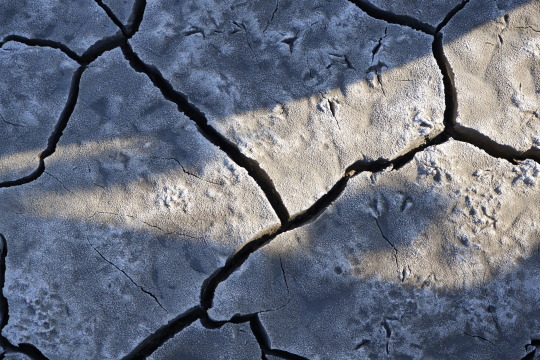
An environmental disaster of an unprecedented level has caused the deaths of thousands of migratory and local bird species at the Sambhar Lake. The reason has been established as Avian Botulism, a neuromuscular disease, that causes paralysis brought on by the Botulinum Neurotoxin upon ingestion. Around 18 thousand carcasses of various migratory and local bird species have been buried in Jaipur and Nagaur district all together till now. Avian Botulism is quite common in birds and many incidents have occurred in the past, reported from different parts of the world including Chilika Lake in India, Manitoba, and Saskatchewan in Canada. However, what has been witnessed in Sambhar was the worst of all.
Of about 200 sq. Km, Sambhar Lake is the largest Inland Saltwater Lake located around 80 KM southwest of Jaipur spread across three districts Jaipur, Nagaur, and Ajmer in the state of Rajasthan. The historical Town of Sambhar creates an entrance to the salt pans where a staggering 2,10,000 tonnes of salt production takes place every year. The lake is divided into three sections starting with Shaheed Bhagat Singh Salt Pan where most of the salt production facilities exist, further, we can find Shakambari Jheel where the famous Shakambari Devi Temple resides next to a hill just at the periphery of the lake overlooking vast salt flatlands. Ultimately, it concludes at the Maa Devyani Salt Lake.
A history withholding 1500 years of salt production passed down from various rulers such as the Rajputs, The Mughals, The Britishers, the local communities and finally the Government of India, during different periods in past can now be seen enduring a general degradation and reduction of water accumulation at the Lake. Reason being, unwarranted construction of check dams and diversion of river water for agricultural use by the residents of nearby towns and villages.
The route to sambhar goes through the town of Phulera which can be accessed using the Ajmer express highway by taking a right on reaching Mahlan if missed the next right can be taken at Mokhampura, approaching from Jaipur. If progressing from Ahmedabad(Gujarat), one can reach Ajmer and further their journey crossing Kishangarh. Mostly, individuals advancing from the east can simply reach Jaipur and then take their journey forward accordingly.
Ultimately, to assess the aftermath of the massacre manifested at the lake, we planned upon a trip. Our journey suffused with fog started around 8:30 on 29th December 2019 in the morning.
Further, on our way to witness the disastrous remnants of previously mentioned ruination, we came across detrimental mining activities whereupon the whole mountains could be seen depleted into rubble. Approaching the Sambhar lake we took a quick detour to explore Devyani Temple situated adjacent to the lake. At first glance on entering, we witnessed a pond infested with algae and partially dead lotus plants at the center surrounded by the local architecture. After exploring a bit we decided to leave for Sambhar Lake.

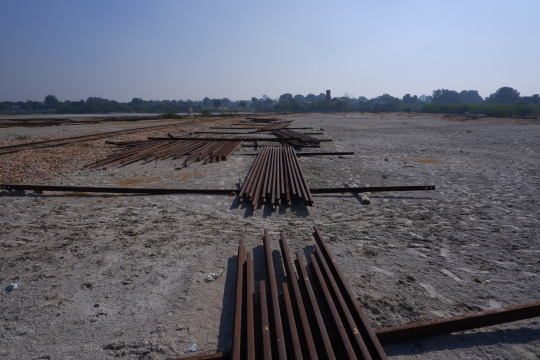
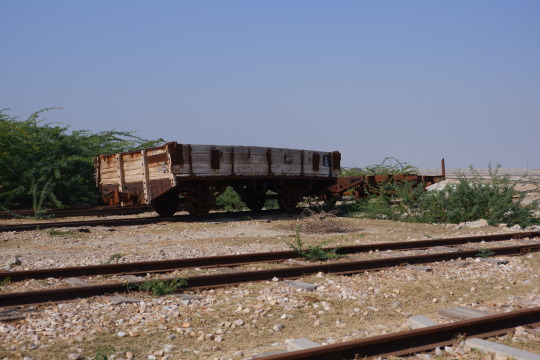

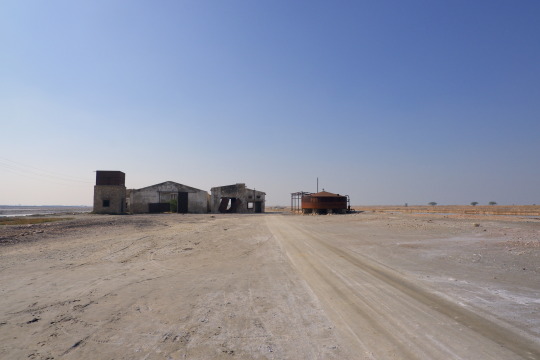
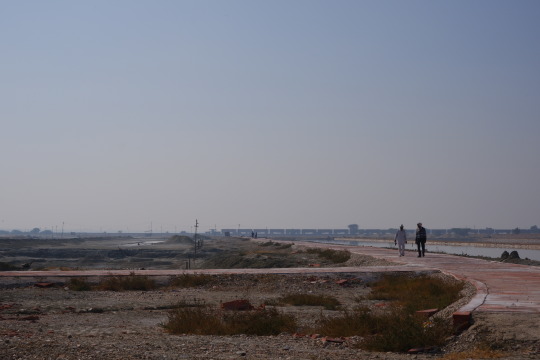
Our first encounter with the lake gave us to scan over salt quarries and relics of the railway tracks and abandoned bogeys, which are part of the salt production facilities existing at the Shaheed Bhagat Singh Salt Pan. Moving forward, we left for the infamous salt flatlands spread across in front of the Shakambari Devi temple which is 22 km from the salt pan itself. Driving, we reached and parked the car in one part of the lake and decided to tread on feet, this vast expanse of nothingness. We were expecting a healthy amount of birds, migratory and local, consisting of avocets, stilts, plovers, and coots accompanied by the inquiring birdwatchers but to our surprise, very few members of the human race and their vehicles scattered could be seen at the salt flatlands. At a distance, one could see some birds frolicking in the waters. We came across many feathers of birds and a carcass, presumably of a sandpiper, stuck upon a lone stone, as an evident reminder of disaster struck upon the lake, a sad tragedy involving outrageous numbers of migratory and local bird species.
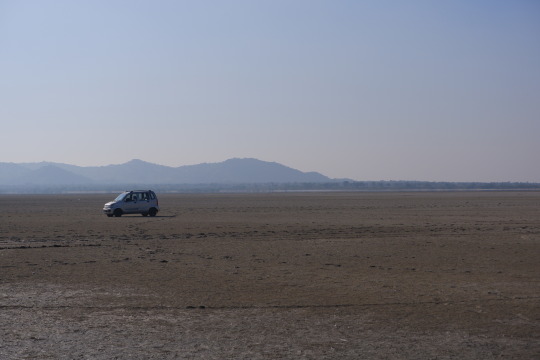
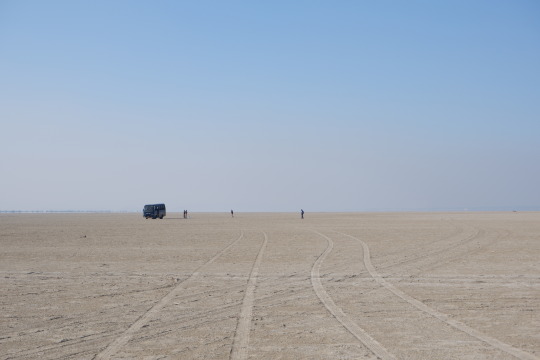

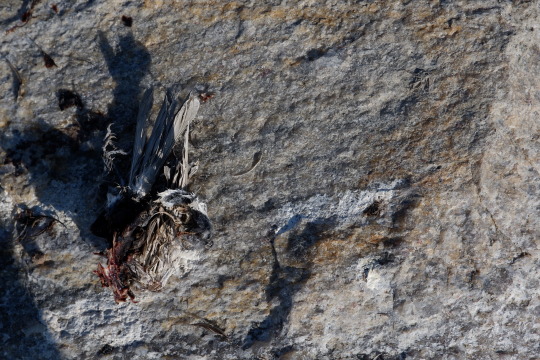
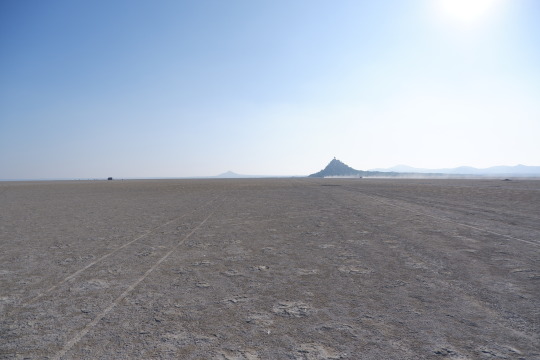
There is no milestone that birds can use, unlike humans. To navigate the free winds and space they make use of their genetic inherent qualities or they might use their sight, sound, and smell. Theories ranging from quantum entanglement to genetic coding are trying to explain this mystery but till now, nobody really knows how birds navigate their migratory routes - only hypothesis and speculations galore.
Birds like Gull-billed Tern, a completely white with grey feathers, orange legs and beak, and a black cap, migrates 6000 kilometers all the way from Spain, traversing Italy and then Greece eventually traveling to the Persian Gulf, leading to Tropical Africa and finally making their journey through the Indus Plains of Pakistan and India it lands in Sambhar. Another bird called the Temminck’s Stint is a small wader with mainly plain brown upperparts and head with white underparts, travels from Scandinavia and Russia, and spends its winters in Sambhar. The lake holds much importance amongst the astonishing numbers of migratory species visiting for wintering. The majority of them that visit Sambhar during winters are from Europe and Central Asia consisting of Sandpipers, Ruffs, Plovers, Coots, Common Teals, Northern Shovelers, Gadwalls, Gull-billed terns, and Redshanks.
Contemplating over the distances traveled and the variety of species arriving at the lake one can assess how much the catastrophe must have affected the bird population world over. The deaths of innocuous avian species at such an unprecedented level due to the degrading ecology should be enough to capture people’s imagination and force them to envision or conjure up a solution so that the situation we are in doesn’t deteriorate. Such extreme events conspired due to the unhealthy climate and environment is in itself a grave reminder that such profound holocausts are inevitable unless we take cognizance of the dire situation we are in.
1 note
·
View note